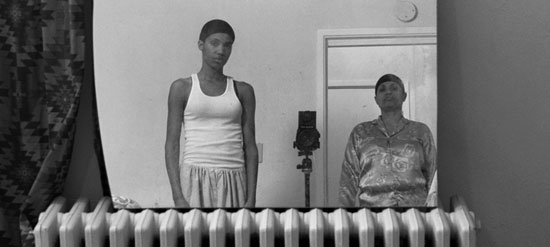Henrik Olesen's Mr. Knife and Mrs. Fork was first exhibited at Studio Voltaire (London) in 2009. The version I discuss in this essay was exhibited at Museum Ludwig (Cologne) in 2012. Olesen's exhibition is also represented in the catalogue How Do I Make Myself A Body?, eds. Nikola Dietrich and Jacob Fabricius (Ostfildern: Hatje Cantz, 2011). LaToya Ruby Frazier's A Haunted Capital, organized by Eugenie Tsai and John and Barbara Vogelstein, took place at the Brooklyn Museum (New York City) in 2013.
José Esteban Muñoz, Cruising Utopia: The Then and There of Queer Futurity (New York: New York University Press, 2009.
Ibid., 9.
Lee Edelman, No Future. Queer Theory and Death Drive (Durham, NC: Duke University Press, 2004); Teresa de Lauretis, Technologies of Gender. Essay on Theory, Film, and Fiction (Indiana UP 1987).
Kerstin Brandes, Fotografie und "Identität". Visuelle Repräsentationspolitiken in künstlerischen Arbeiten der 1980er und 1990er Jahre (Bielefeld: transcript 2010).
For more on the normative and normalizing effects of the frame, see Judith Butler, "Folter und die Ethik der Fotografie," in Bilderpolitik in Zeiten von Krieg und Terror. Medien, Macht und Geschlechtenverhältnisse, ed. Linda Hentschel (Berlin: b_books, 2007), 205-27; Jacques Derrida, "The Parergon," in The Truth in Painting (Chicago: University of Chicago Press, 1987); and Sigrid Schade und Silke Wenk, Studien zur visuellen Kultur (Bielefeld: transcript, 2011).
Cathy Cohen, "Punks, Bulldaggers, and Welfare Queens: The Radical Potential of Queer Politics?" in Black Queer Studies: A Critical Anthology, eds. Patrick E. Johnson and Mae G. Henderson (Durham, NC: Duke University Press, 2005), 21-51; Jasbir Puar, Terrorist Assemblages: Homonationalism in Queer Times (Durham, NC: Duke University Press, 2008); Fatima El-Tayeb, European Others: Queering Ethnicity in Postnational Europe (Minneapolis: University of Minnesota Press, 2011).
Antonin Artaud's radio play To Have Done with the Judgment of God (1947) is reprinted in How Do I Make Myself A Body? (134-139). This play inspired Gilles Deleuze and Felíx Guattari to develop their concept of the body without organs.
Ariane Müller, "U as in One," in How Do I Make Myself A Body?, 80.
The performance is documented in the video "LaToya Ruby Frazier Takes On Levi's" (2011).
See →.
